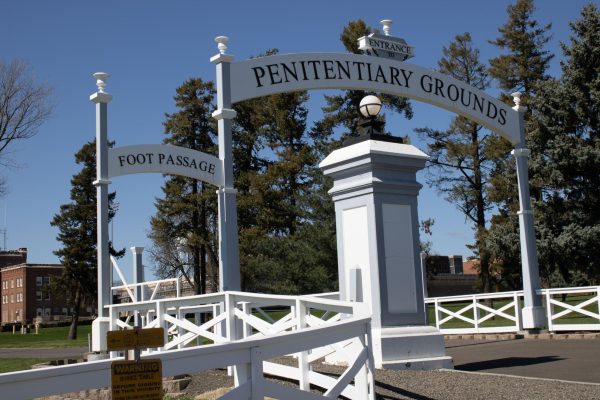“A Few Good Men” Has Honorable Themes
November 9, 2017
With a stunning cast and an impressive array of mystery, casework and drama, the Walla Walla Little Theater’s adaption of “A Few Good Men” is a must-see. It was originally written by Aaron Sorkin (the screenwriter of “West Wing”) to be a theater production; he then worked with director Rob Reiner to create the 1992 adaption, starring Tom Cruise, Jack Nicholson and Demi Moore. The Little Theater production is directed by Kay Fenimore-Smith and George Smith, and will be shown each Friday through Sunday through Nov. 19.
“A Few Good Men” focuses on the court-martial of two U.S. marines stationed in Guantanamo Base Naval Station. The play predominantly explores hardships of the lawyers assigned to the case, as well as the cover-up and its consequences.
Kay Fenimore-Smith and her husband George Smith jumped on the chance to direct “A Few Good Men.”
“Twenty-five years ago, my husband and I appeared in the production at the Little Theater,” Fenimore-Smith said. “It’s always been a favorite of ours; we are mostly attracted to it due to the overriding themes of honesty, integrity, what it means to live by a code of honor, and it’s a well-written play, but it’s the themes that really attracted us.”
While the themes may intrigue the directors, the writing is absolutely phenomenal–Sorkin is careful to temper the seriousness of the case and its characters with a quick wit that drew several laughs from the audience on Saturday night. It also stops short of confusing the audience, with characters who do not so much resemble Sherlock Holmes, as occasionally draw upon an intangible knowledge.
The acting is well done, with several standout performances, the best of which comes from Kevin Loomer, the director of Theater Arts at WWCC. He plays Lt. Col. Nathan Jessep, a hot-headed and arrogant member of marine command. Loomer manages to harness the same anger that Jack Nicholson did almost 30 years prior.
But there is one problem with this show: it is too easy to compare to the film and, even as a play, it is structured to resemble a film. Film has the ability to slip between different scenes in a second; it doesn’t need to pause the action so stagehands can move props on or off the stage, or actors can slip into different clothes – theater all but requires it. There are over 40 scene changes in this production of “A Few Good Men,” and though it is impressive that they can achieve the effect of watching a film, the 30 seconds or more of darkness ultimately lifts the audience out of the show. It is hard to stay focused on a production for almost three hours when some of that time is spent watching shadows move pieces on and off stage; it detracts from a brilliant play.
Smith and Fenimore-Smith agree with this detracting element of the show.
“[Aaron Sorkin] was also the screenwriter for the movie, so he updated it afterwards to make it more closely resemble the movie,” Smith said.
“Which has created problems in terms of putting a play on,” Kay Fenimore-Smith added.
“In a movie you can cut, zoom in on this, zoom in on that; we’ve got 41 different scenes,” George finished.
The two directors had to adapt a script that resembled a film to the stage, and though it is imperfect, it is also a brilliant production of “A Few Good Men.” Despite the evident problems with having so many scenes and moving pieces, the production is one of those rare gems that comes along – with the help of an amazing cast, this play should not be missed.








